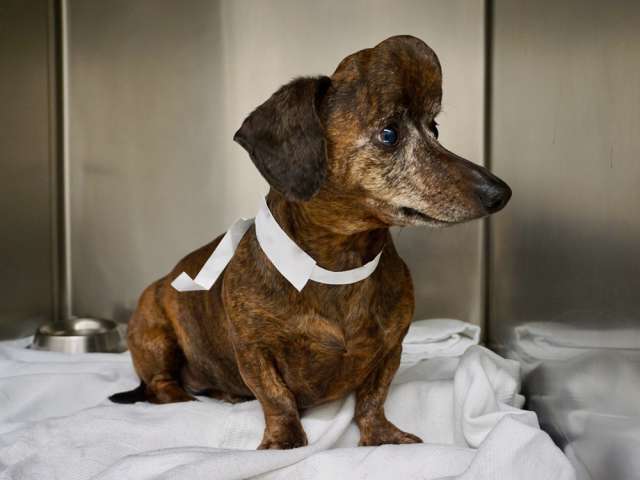Patches is a nine-year-old dachshund who, for years, had a small and apparently harmless bump on her head. Recently, however, that bump began growing until it became the size of an orange, and turned out to be cancerous. Patches’ owner was referred by her veterinarian to Cornell University‘s veterinary program, which in turn pointed her toward Michelle Oblak, a veterinary surgical oncologist with the University of Guelph’s Ontario Veterinary College. Oblak had been studying the use of 3D printing technology for dogs.
Patches’ tumor had grown right through her skull; normally for a case like hers the tumor and part of the skull would be removed, and then a titanium mesh would be fitted in place. According to Oblak, the procedure is imprecise, costly and lengthy. However, Patches, who needed about 70 percent of her skull removed and replaced, was a perfect candidate for a new procedure, in which a custom titanium skull cap is 3D printed. According to Oblak, veterinarians in the United Kingdom had performed a similar procedure, though on a much smaller scale.
Patches’ owner, Danielle Dymeck, was nervous about the prospect, but decided to go ahead with the procedure.
“They felt she could recover from this,” Dymeck said. “And to be part of cancer research was a big thing for me — if they can learn something from animals to help humans, that’s pretty important.”
Oblak and her team started by taking a CT scan of Patches’ head, then used several different software programs to digitally cut out the tumor and diseased parts of the skull from the CT image. They then designed the 3D printed replacement, complete with holes for screws to hold it in place, and sent the design to ADEISS, a London, Ontario-based medical 3D printing company, which 3D printed a custom titanium skull cap. It took about two hours to design the skull cap and send it to ADEISS, and the final print was ready in about two weeks.
Oblak also created a cutting guide to follow during the surgery.
“There’s very little room for error,” she said. “We’re talking less than two millimetres or else the plate wouldn’t fit.”
Oblak hopes to have the details of the procedure, which she believes is the first of its kind in North America, published in the upcoming months. A similar case was treated in Texas earlier this year, but a titanium mesh was used rather than a full skull cap, and tragically, the dog passed away from complications after the surgery. Patches, on the other hand, is doing well, despite the fact that in a separate incident a week after the surgery, she suffered a slipped disk that paralyzed her hind legs. She is in good spirits, however, and otherwise healthy and cancer-free.
“She has a wheelchair that she refuses to use, so she pulls herself around on her two feet, but she’s pretty fast,” Dymeck said. “I feel lucky to be her owner, and she’s still the boss of the house…We called her our little unicorn because she had this bump on her head, but it would have killed her. It’s pretty amazing what they did for my girl.”
Discuss this and other 3D printing topics at 3DPrintBoard.com or share your thoughts below.
[Source/Images: The Province]
